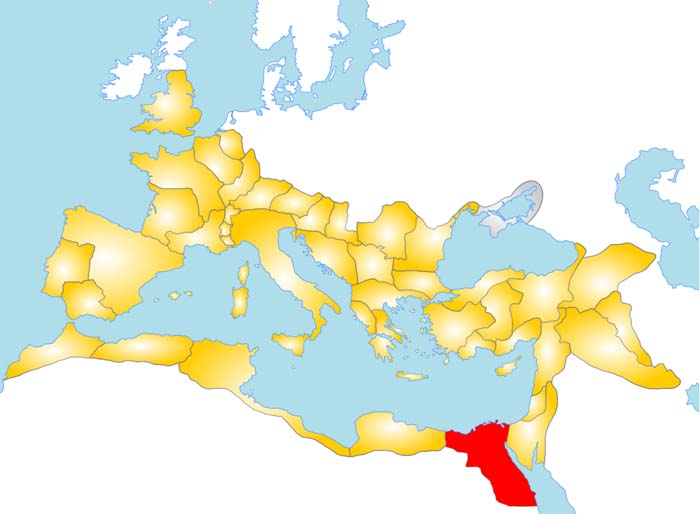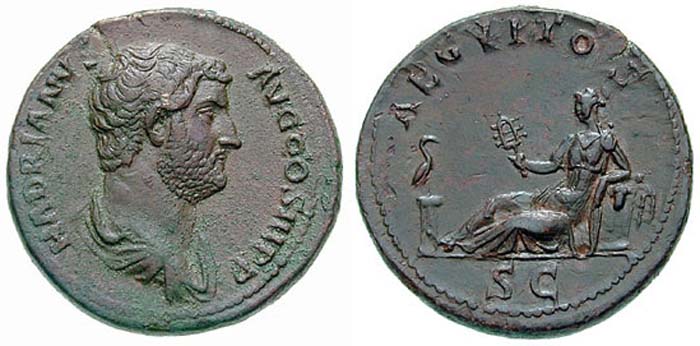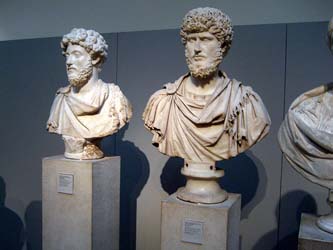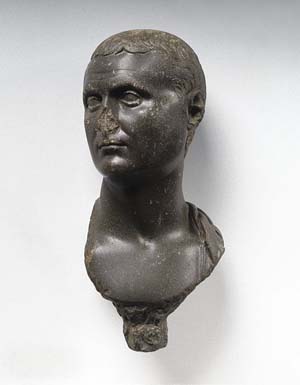Egypt Under Roman Rule
Egypt, due to its plentiful water resources, was a fertile land and happened to be a situated in a good place to be used as a trade center. Because of this, other civilizations were keen on taking it over and using Egypt for their own purposes, starting with Alexander the Great. Egypt was eventually taken over by the Roman empire.
History of Ancient Egypt under Roman Rule
The history of Roman Rule in ancient Egypt is long, having lasted close to 700 years. Before annexation by the Roman Empire, Egypt was conquered by Alexander the Great, followed by the general Ptolemy. The Ptolemaic empire ruled Egypt for approximately 300 years.
The take-over by Rome was set in motion only a century into Greek reign, as the Ptolemies began forming alliances with the Romans. These alliances grew stronger and more abundant over time. Upon the death of Ptolemy Auletes in 51 B.C. the care of his children, including Cleopatra VII, fell to a Roman named Pompey.
The famed Cleopatra VII was the last Ptolemaic ruler. The story of Cleopatra, Marc Antony, and Caesar Augustus is the story of Roman conquest of Egypt. Augustus defeated Marc Antony, deposed Cleopatra, and annexed Ptolemaic Egypt to Rome. He then renamed it Aegyptus.

Egypt as a Roman Province
To block the influence of the Roman Senate on the new Aegyptus territory Caesar Augustus appointed a Prefect to rule Egypt. A Prefect was a man who was of the Equestrian Class, the lowest aristocratic class of Rome. The Roman Empire province of Egypt included most of todays’ Egypt, except for the Sinai Peninsula. The Prefect Tragan later conquered and added Sinai.
The first Prefect of Egypt was Gaius Cornelius Gallus. Gallus brought Upper Egypt under full Roman control by military might. He brought Lower Egypt back into the Kingdom, which the Ptolemies abandoned. It was the job of the Prefect to administrate justice, provide military security, and organize finance and taxation for the province.
The third Prefect, Gaius Petronius, improved the province’s wealth. He accomplished this by focusing on agriculture and restoring Egypt’s neglected irrigation canals. This action brought about a boom in agriculture and economy that lasted for hundreds of years.

© Classical Numismatic Group, Inc. - Roman Coin depicting Egypt as a woman holding a sistrum
Roman Government
Roman government in ancient Egypt further divided the province into smaller provinces. Each had its own leadership that was subject to the Prefect. Roman administration maximized efficiency and revenue. This design as applied to Egypt was successful for the first few centuries.
Roman Military
The Roman military in ancient Egypt was at first made up of Greek and Egyptian soldiers. These soldiers had belonged to the Ptolemaic military. Three legions of Roman soldiers were then stationed in Aegyptus and used to expand or attempt to expand the province. The legions brought great security to the new province. Each legion had 5,120 men, plus servants and slaves. They were also used to keep the conquered under control and the people knew them for their harsh tactics.
The Romans had adapted their military for 500 years by the time they annexed Egypt. It was the most professional and effective military in the world. The size and strength of their infantry force was unequaled and would not be matched again for a thousand years. Like the Egyptians, the Romans utilized chariots to great effect.

© Wally Gobetz - Busts of Roman Emperors
Egyptian Economy under Roman Rule
The last century or so of Ptolemaic rule had seen the Egyptian economy in decline. The Romans advanced administrative knowledge and application improved the economy during Roman rule. Rome had developed a much more efficient and complex system of taxation. They also encouraged entrepreneurship by landowners and the wealthy by giving them lower tax rates.
The government encouraged the privatization of land and business. They monetized the economy. Goods and services moved around on a huge scale. The renewal of agriculture meant that large amounts of grains could be processed and shipped to Rome. Egypt was supplying most of Rome’s grain in a short time. The poor and working class earned their living by working on lands owned by the Emperor or wealthy landowners.
The system taxed and burdened the lower classes at higher rates. The lower classes were exploited for the enrichment of the Empire and the wealthy classes. Over time this system of exploitation combined with corruption in the leadership of the smaller provinces caused a collapse. Reform became a theme during the reigns of Diocletian and Constantine 1. These reforms restored some of the productivity and resulting income.
Social Structure

Bust of a Roman Nobleman
A complicated system of social structure existed during Roman rule. Social classes were based on race and where you lived. The system divided classes as Roman citizens, Greeks, metropolites, and rural Egyptians.
The Romans viewed the Hellenic Greeks as Egyptians, which neither the Greeks nor the Egyptians agreed with. People who lived in a major city had a higher social status and paid lower taxes than those who lived in smaller cities or in the rural areas. Greeks paid higher taxes than Romans, but lower than Egyptians.
Only those who were citizens of Alexandria could become Roman citizens. This meant they could enjoy the privileges that went with that rank. There were also many Jewish communities in Egypt, and these held their own class and rank separate from the others.
There were few options for ascending in social class. Joining the Roman military was the simplest and most often used option. Native Egyptians were only allowed into the auxiliary forces. Once they finished their tour of duty, they became Roman citizens. The only other option for a native Egyptian was to become a citizen of Alexandria, but one had to prove familial ties to the city to do so.
A freed slave attained the status of his or her previous owner. Your social status also influenced the justice system. Roman citizens were executed by beheading, for instance, rather than crucified. One could not whip a Roman citizen, only an Egyptian. Greeks had the lesser punishment of beating by a rod.
Religion
Religion did not change much at first under Roman rule. The Emperors of course demanded worship as gods, but this was not foreign to the Egyptian way of life. The people also kept their other gods. Temples were built and well-kept during Ptolemaic rule. It seems the influence of the priests and priestesses on daily life had diminished with time.
Mark the Evangelist introduced Christianity to Egypt in 33 A.D. It was surprisingly well accepted by the Egyptian people. There were close similarities between the ancient religion of Egypt and Christianity. By 200 A.D. Alexandria was recognized as a major center of Christianity. It became the official religion of the land under Constantine 1.
The Council of Nicene, the desert fathers, and monasticism are all products of Egyptian Christianity. These practices helped set the course for the new religion.
Facts about Roman Ruled Egypt
- Egypt annexed to Rome by Caesar Augustus in 30 B.C.
- Caesar Augustus renamed Egypt to Aegyptus, which it remained while Rome ruled.
- Aegyptus was ruled by a Prefect appointed by each Emperor.
- Prefects were responsible for the administration, protection, and finances of the province.
- Egypt was divided into smaller provinces that reported to the Prefect.
- Egyptian agriculture thrived under Roman supervision.
- The economy improved under Roman rule to begin with, then fell to corruption.
- Reforms during the reign of Diocletian and Constantine 1 again saw improvement.
- The Emperor stationed three Roman legions in Egypt for military strength and protection.
- Social status was based upon a person’s ethnicity and place of living.
- Social statuses were Roman citizen, Greek, Metropolite, Egyptian, and Jew.
- Taxation and justice were based on your social status.
- Military service was the most common method of improving your status.

